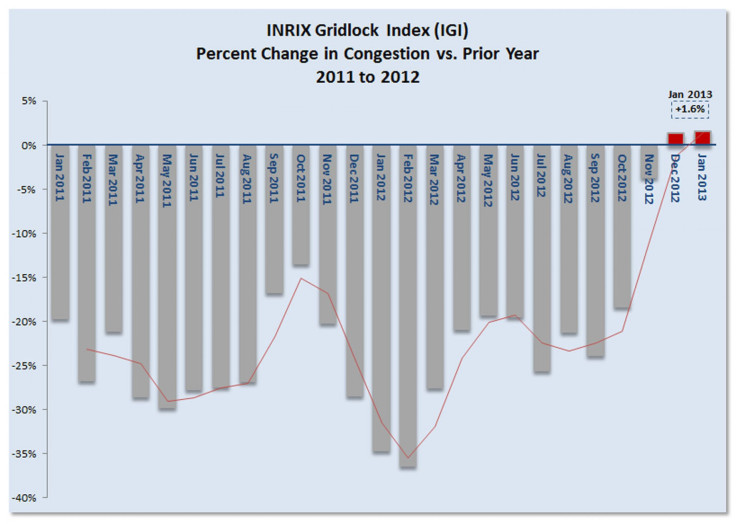INRIX Gridlock Index Says Traffic Congestion Increases as Companies Ship More, Hire More And As Consumers Spend More

The upside of traffic congestion is that it means the economy is becoming more active. More people are using their cars to head to work or actively look for work. It signals that consumers are out shopping and also that commerce is healthy as more distribution and delivery trucks are on the roads.
January 2013 data from the INRIX Gridlock Index show that vehicle traffic increased by almost two percent year-over-year. The 1.6 percent boost is the second consecutive month that gridlock rose above year-earlier levels, which breaks a series of declines dating to 2011.
"Stalled traffic is actually a side effect of a moving economy as people go to work, spend money and businesses respond to demand," said Bryan Mistele, CEO of INRIX.
The Labor Department's late February figures show a drop in jobless claims by 22,000 while the Redbook Index of retail sales indicate a 1.3 percent rise in the first four weeks of February from January's level.
The IGI report looked at the 100 most populated metro areas of the U.S. and determined that 55 of them experienced increases in traffic congestion in January 2013. In terms of averages, the figures show that a trip took drivers 6.4 percent longer in January than it would have a year prior.
Cities that experienced increases include Salt Lake City, Utah, Greensboro, N.C., Knoxville, Tenn., and Richmond, Va., Among those that saw decreases are Louisville, Ky., Youngstown, Ohio, Buffalo, N.Y., and Fresno, Calif.
© Copyright IBTimes 2024. All rights reserved.






















